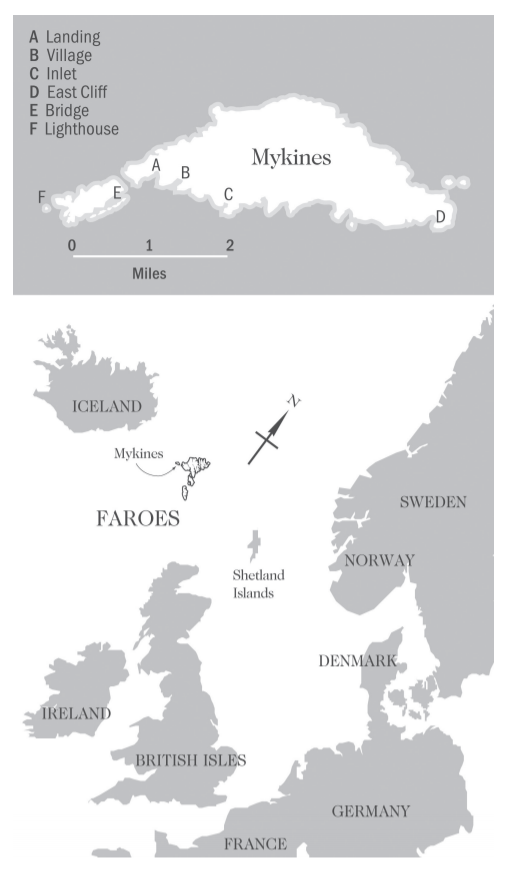As a boy mom, a small part of my regular reading diet includes previewing books that come from trustworthy sources as possible reads for the often difficult-to-please 8-14-year-old boy niche. In this book list article, Diane and I mention that, in our experience as teachers, boy moms, and encouragers of readers, we have learned that most boys like to read about “real things” or things that could be real. Historical fiction, non-fiction, and specifically animal and nature adventure-related books have a much higher chance of attracting reluctant readers than wordy prose or complex fantasy. Bethelehem Books has a catalog that will delight boy mamas as it is rich with these kinds of books.

In one of the regular Bethlehem Books sales, I picked up The Strange Intruder by Arthur Catherall, thinking it might the kind of book that Michael would like. After previewing it, I am surprised by how much I liked this book! Surprised because this book is pretty much the opposite of what I like to read: it is short, the language is relatively simple, there is no character development, and the plot is ambiguous, but it is steeped in boyish mystery. Any plot summary I could give would make this story sound boring, and yet, it isn’t boring at all. In fact, it is mysterious and exciting and would be very appealing to boys who are interested in survival themes.
Diane and I are nearly always suspicious of authors who write many books in rapid succession. In our experience, authors like that don’t seem to let their stories rest long enough on the editing desk to be of high quality. Either the story or the writing tends to suffer from the need to write quickly. Even Charles Dickens and Mark Twain, rare exceptions to this rule, wrote some duds. I have only read one of Catherall’s books. But, according to a biographical sketch at the back of the book, Catherall was unique among his contemporaries. Between 1950 and 1980, Catherall was “bringing out fiction of a high quality at a constant rate, often under pseudonyms, to a total of 100 titles to his name.” The editors at Bethlehem Books explain that while writing under the names of A. R. Channel, Dan Corby, J. Baltimore, Linda Peters, Peter Hallard, Trevor Maine, and Margaret Ruthin, Catherall persevered “through many rejections and a ‘long hard grind uphill,’ he made a full-time career as the author of action-packed adventure books for young people,” and that what he wrote was of good quality for young readers.

Part of Catherall’s genius lies in his varied geographical settings. Despite fame and fortune, Catherall loved to travel in the Kipling sort of way: simply, exotically, by sea, and intimately. Catherall was a natural sailor and he loved to see the whole world. While traveling, he would take in the location and look for a story from that place that would be true to the locale.
“As a young reader I always took for gospel whatever I got from a book. For that reason I have endeavored throughout my life as a writer to be authentic. As far as possible, I have been to places where I set my stories. I have worked with young people for over 40 years and I have tried to get the feel of what they look for.” – The Evening News, March 3, 1966
The Strange Intruder is set in the Faroe Islands in the then-present time of the 1960s. At this time, the people of the islands have modern conveniences but old-fashioned lifestyles. They are entirely dependent on the deep sea fishing and whaling trade of that region. When our story opens, a whale is spotted and all of the able-bodied men who are not currently on deep-sea fishing ships rush out to kill the whale. Their endeavor will take more than a day, and will lead them many miles from home. While they are gone, a fishing boat signals the lighthouse that it is in distress. The situation is dire as the cliffs and rocks make rescue nearly impossible, and the whale spotting emptied the island of any men or teenage boys and boats who could help. In an exciting twist, we find out that the fishing ship captured a starving polar bear that they were hoping to sell (still alive) on the mainland. Needless to say, that polar bear has become a substantial problem.

Is this story line unlikely? Yes and no. That is part of what makes it so intriguing. It would not have been uncommon for a whaling party to leave the island while the other men were away fishing. A whale would have fed the entire island for months and whale oil was a critical resource for their survival. Catherall makes it clear that a distressed fishing boat would not have been an uncommon tragedy, so the story had to be based on something else. Something unique. The polar bear gives us an unexpected and exciting twist. Thanks to the hungry bear, we have a story that is 80% action and 20% story development.
This book reads quickly, is wholesome, and is ideal for boys who want to live vicariously in the shoes of a boy who is just about to come of age. The courage and strength of mothers, disabled community members and the elderly shine through beautifully. There are lot of heroes in this story.
Available in paperback and also in audio narrated by John Lee.
Warning: the polar bear does what starving bears do – it kills and eats anything in its path. Sensitive readers will want to know that the dog dies heroically while trying to protect his people and that some of the sheep are massacred.